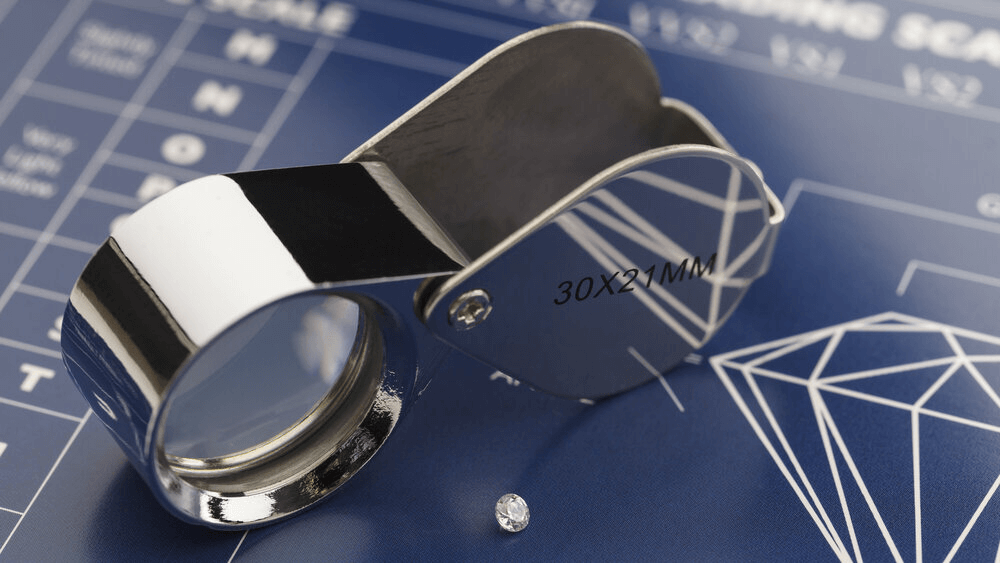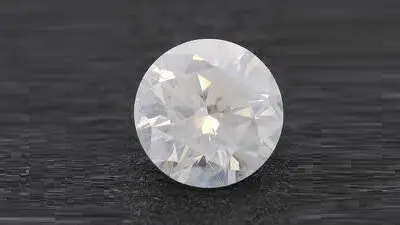The Truth About SI1 Diamond Clarity Revealed

By Gary A.

Edited by Olivia H.
Published Sep 24, 2021
Edited on Mar 31, 2025
When it comes to balancing beauty and value, SI1 diamonds offer a sweet spot where minor inclusions are barely noticeable, but the sparkle and savings might just be exactly what you’re looking for.

- 7 Quick Tips for Buying a Diamond Engagement Ring with SI1 Diamond Clarity
- Introduction
- SI1 Diamond Meaning
- SI1 vs Other Clarity Grades
- Cloudiness in SI1 Diamond Quality
- Sparkle in SI1 Diamond Clarity
- Understanding Price Dynamics
- Our Expert Take
- 10 Frequently Asked Questions About SI1 Diamonds
Before we dive deeper into the specifics, here are some practical tips to help guide your decision-making process:
7 Quick Tips for Buying a Diamond Engagement Ring with SI1 Diamond Clarity
When purchasing a diamond engagement ring, especially with an SI1 clarity grade, it’s essential to pay attention to several key aspects. These practical tips will guide you in making an informed decision, ensuring you choose a quality piece that meets your expectations and budget.
- Tip 1: Understand the SI1 Clarity Grade: Before diving into the purchase, familiarize yourself with what an SI1 clarity grade entails. SI1 stands for ‘Slightly Included’ and represents diamonds that have minor inclusions, which are usually not visible to the naked eye. However, the size, number, and location of these inclusions can vary, affecting the overall appearance of the diamond.
- Tip 2: Examine the Diamond Under Different Lighting Conditions: Viewing the diamond under various lighting conditions can give you a better idea of its true appearance. Inclusions in an SI1 diamond might be more visible under certain types of light. Check the diamond in natural daylight, under LED lighting, and with a jeweler’s loupe to get a comprehensive view of its clarity.
- Tip 3: Pay Attention to the Inclusion Type and Location Inclusions can be of different types, such as crystals, feathers, or clouds, and their position in the diamond can significantly impact its appearance. Inclusions near the center or on the table (top surface) of the diamond are more noticeable than those located at the edges or near the girdle. Opt for diamonds where inclusions are strategically placed or less noticeable.
- Tip 4: Consider the Diamond’s Cut and Shape: The cut and shape of a diamond can influence how inclusions are perceived. Brilliant cuts, such as round or princess cuts, can mask some inclusions better than step cuts like emeralds or Asschers. A well-cut diamond will reflect light more effectively, making inclusions less noticeable.
- Tip 5: Compare with Other SI1 Diamonds: Each SI1 diamond is unique, so it’s beneficial to compare multiple diamonds within the same clarity grade. This comparison will give you a sense of the variation within the SI1 category and help you find the diamond that best meets your standards for clarity and overall beauty.
- Tip 6: Check for Eye-Cleanliness: An essential factor for SI1 diamonds is whether they are ‘eye-clean’ – meaning that inclusions are not visible to the naked eye from a normal viewing distance. Always visually inspect the diamond yourself, or request high-resolution images if purchasing online, to ensure it appears clean to the naked eye.
- Tip 7: Review the Diamond Certificate: A reputable grading certificate, like those from GIA or AGS, will provide a detailed plot of the diamond’s inclusions and their locations. This certificate can be a useful tool in understanding the diamond’s clarity characteristics and ensuring that the inclusions do not adversely affect its beauty or structural integrity. By adhering to these practical tips, you can confidently select a stunning SI1 diamond engagement ring that combines beauty, quality, and value.
Now that you’ve got these practical tips, use Jeweler AI below to find the perfect engagement ring that suits your style and budget:
Introduction
One of the most important things that first-time diamond shoppers realize is that it is possible to find eye clean diamonds at practically any point on the GIA clarity scale, save for the very lowest grades. In other words, the scope for finding a beautiful and worthwhile investment is much wider than you might have imagined when you first set out on your journey to find a diamond.
But, despite the fact that eye clean diamonds (rather than diamonds that are actually flawless) represent the ideal for the majority of shoppers looking to find a stone for their engagement ring, the highest clarity grades still afford a much, much bigger price tag on the market.
Why? Because so many shoppers go into (and back out) the process believing that beauty is reserved for the very top of the clarity scale – something which can, unfortunately, impact the quality of their ring in the end, since they’ll invest too much into this one area.
Our advice? Go through the process by reading our guides and doing as much research as possible. Only get started once you’ve filled the gaps in your knowledge about beautiful and eye clean diamonds – starting with the SI2 clarity grade.
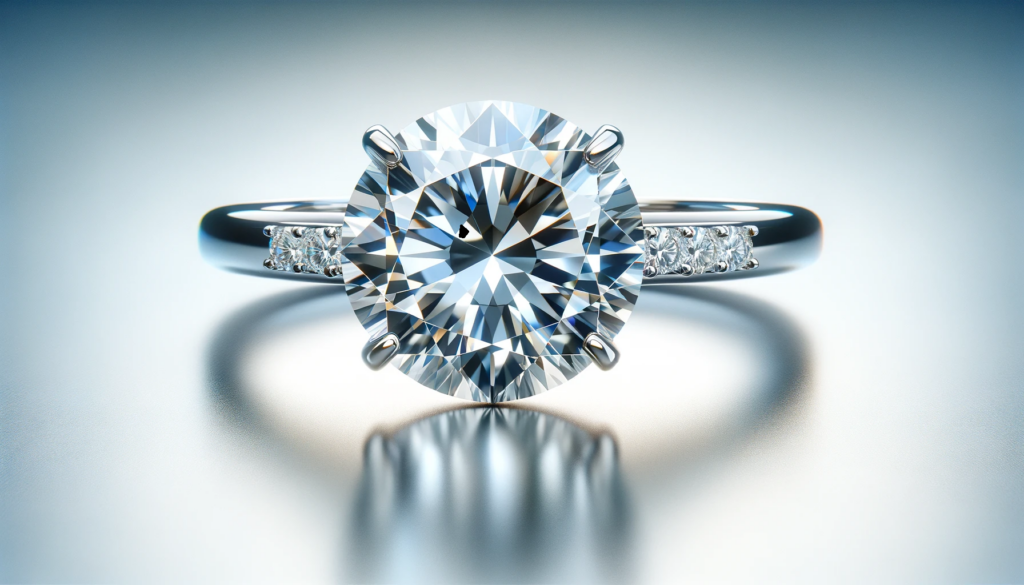
SI1 Diamond Meaning
Clarity is a relatively straightforward subject, and one of the easier aspects to get right when it comes to the Four Cs. Still, it’s not something any shopper can ‘wing’ – at least, not if they want to get the absolute most out of their budget. Understanding the difference between flawless and visually flawless diamonds takes time and research, after all.
SI1 vs Other Clarity Grades
SI1 is the seventh of the GIA’s clarity grades and refers to diamonds that have been found to feature slight inclusions by two skilled diamond graders.
It is the first degree of the SI grade, meaning that it is closely followed by SI2 diamonds, with only marginal differences between the two.
Diamonds in this clarity grade will feature inclusions that are easily noticeable to a skilled grader under 10x magnification. So, while SI1 sits a pretty long way from those top grades of FL and IF diamonds, it’s absolutely not the case that SI1 diamonds will be glaringly obvious to you – or even a skilled jeweler – without magnification. This is what we mean by diamonds that appear visually flawless, or ‘eye clean’.
Si1 vs VVS
VVS diamonds sit higher than SI diamonds on the GIA’s clarity scale – but that’s not to say you won’t find better deals at the SI grade.
Let’s get one thing straight. Diamond shopping is all about recognizing the fact that some diamonds are objectively ‘better’ than others, but that many of those superior features are invisible to the naked eye – and, therefore, not worth paying for if all you want is to find a beautiful diamond to sit in your engagement ring.
If you’re an avid collector, then the appeal of a near-flawless diamond is a totally different story, but, if you’re here reading this, then the odds are that you’re not. Instead, you’re just looking to put your money in the right place – and, for most, the ‘right’ place isn’t the VVS clarity grade.
Si1 vs VS2
VS2 is one grade higher than SI1, although, in some cases, SI1 can be the better choice.
A diamond with ‘very slight’ inclusions stands a better chance of being eye clean than a diamond with ‘slight’ inclusions – but, as you’re probably thinking right now, the difference is pretty minor.
However, the difference between VS2 and SI1 diamonds grows much more noticeable when you take other factors into account – namely, size and shape.
Why? Because the bigger the diamond, the higher the chances that any minor inclusions will be noticeable. In particularly small diamonds, these inclusions can be masked quite successfully by the small facets – and, of course, the high sparkle – but, in larger diamonds, there are fewer opportunities for the flaws to ‘hide’.
Similarly, the difference in facet shape and size between Round cut diamonds and Emerald cut diamonds, for instance, means that you’re much more likely to be able to spot any minor inclusions in the Emerald cut than the Round cut.
In VS2 diamonds, the inclusions are a little harder for a skilled grader to spot under 10x magnification, offering that extra degree of reassurance to buyers that the diamonds they are browsing will likely be eye clean.
Nevertheless, SI2 diamonds are cheaper and, if you can find an eye clean diamond with a great color grade, cut, and carat weight, then a visually identical diamond with a VS2 clarity grade is no better. If you’re interested in the topic, we’ve got a full article on SI1 vs VS2 for you to explore.
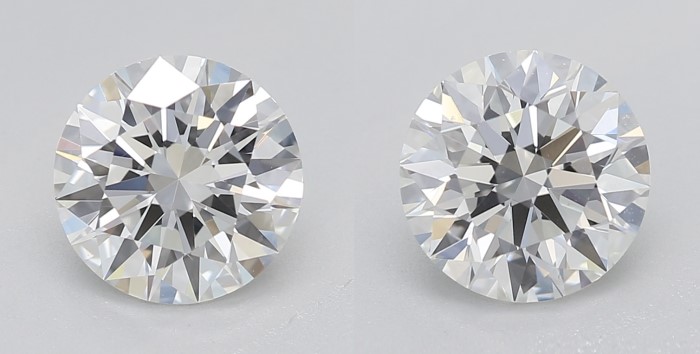
SI1 and SI2: A Comparative Analysis
The SI1 clarity grades offer more scope for finding the perfect diamond, while still offering a much more affordable price tag than those for similar diamonds with VS and VVS clarity grades.
SI2 is the lowest clarity grade where you’re going to find an eye clean diamond, and, at this point, they’re certainly in the minority. Less than a third of all SI2 diamonds on the market are thought to be eye clean, which means that you might have to kiss a few frogs before you finally find one that’s beautiful enough for your engagement ring.
As we mentioned above, size and shape play a major role in deciding whether or not a diamond of a certain clarity grade is eye clean. Another factor that can cause some SI2 diamonds to appear eye clean and some SI1 diamonds to appear visibly included is the placement of those inclusions.
If an SI2 diamond has inclusions scattered toward the very edges, and an SI1 diamond features slightly fewer inclusions that are clustered in the very center (table) of the diamond, then the first diamond may appear ‘cleaner’, despite having a lower clarity grade.
Even so, you may be limiting yourself too much when it comes to the size and shape of diamond you’re looking for. Just as VS2 can be better than SI1 for certain cuts (like the step cut) and larger diamonds, the same argument holds true when you’re on the fence between SI1 and SI2.
Our advice? Budget a little extra for VS2/SI1 diamonds. Don’t close yourself off to SI2 entirely, but don’t hold your breath, either.
Eye Cleanliness in SI1 Diamond Quality
Many SI1 diamonds are eye clean – although not all of them will be. Each clarity grade (aside from FL) will include diamonds with significant differences since every diamond is totally unique.
In case you weren’t aware by now, ‘eye clean’ diamonds represent the ideal choice for the overwhelming majority of diamond shoppers. This is why we’re suggesting that SI is actually the far better choice than VVS in many instances, provided that the SI1 diamond is eye clean.
How do you know if the stone is eye clean? By simply looking at it. Eye cleanliness is just as it sounds – and it’s far more cost-efficient than relying on the highest clarity grades possible. You can judge eye cleanliness without any special tools or expertise.
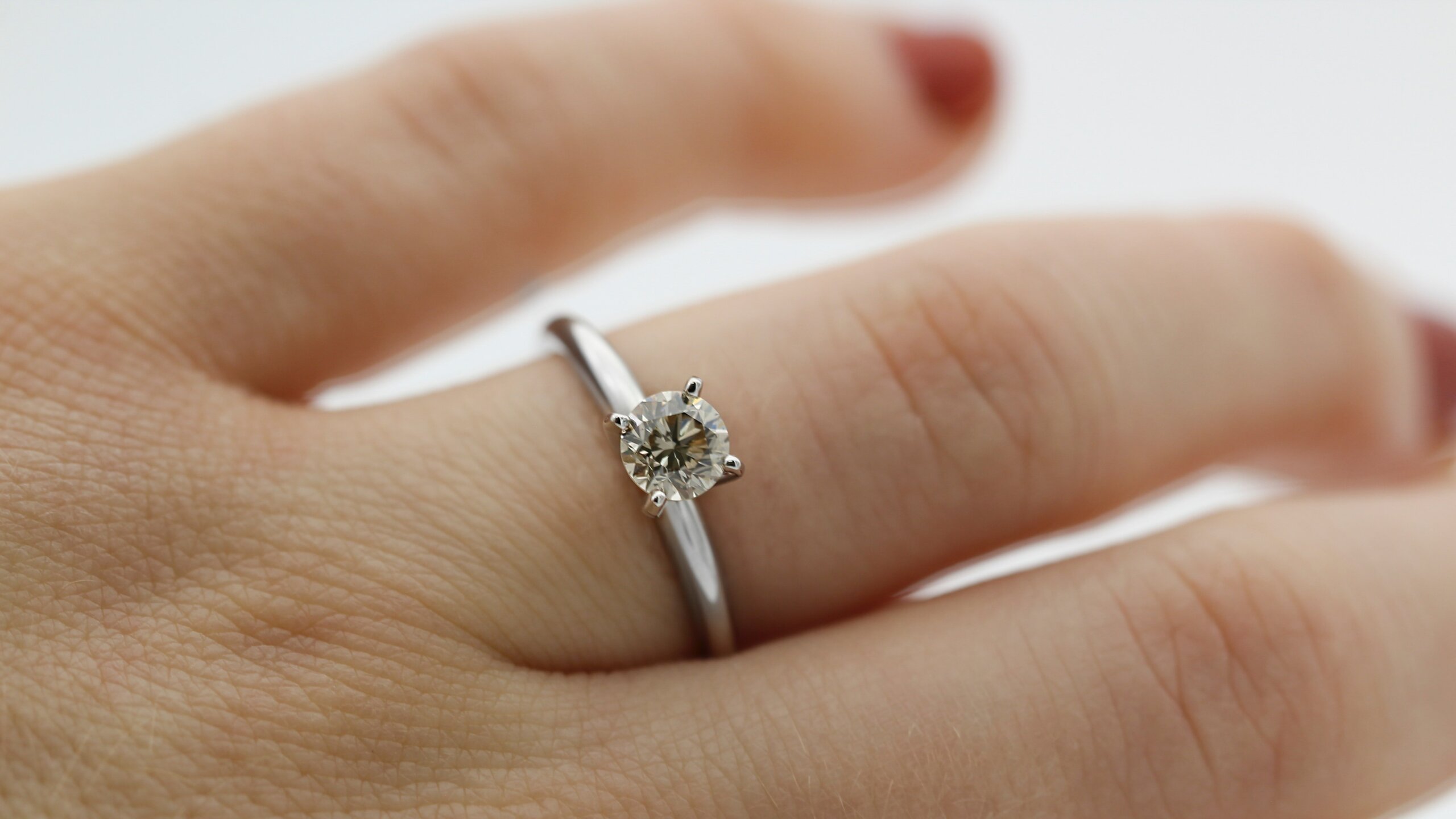
Cloudiness in Si1 Diamond Quality
Si1 diamonds won’t be cloudy unless they’re suffering from strong fluorescence. The SI1 clarity grade is unlikely to apply to a diamond with inclusions significant enough to cause cloudiness.
A high degree of diamond fluorescence can cause an otherwise eye clean stone to appear cloudy, and this won’t have impacted the clarity grade printed within the GIA report at all. Fluorescence is addressed within the report but under its own category. So, even a flawless diamond could suffer from fluorescence.
Otherwise, strong cloud inclusions – strong enough to dull the sparkle of a diamond and make it appear cloudy – will in all likelihood bring the stone’s clarity grade way down to I1 or I2, rather than a grade as high (relatively speaking) as SI1.
Sparkle in SI1 Diamond Clarity
SI1 diamonds will sparkle so long as they’re cut to a high standard.
In the same GIA Report that features your diamond’s clarity grade (and diamond plot, which maps out any inclusions present within the stone), you’ll be given a cut grade. For this, you want to stick to the two highest grades: ‘Excellent’ and ‘Very Good’.
If not, you run the risk of losing sparkle – much, much more than you risk losing any sparkle on an SI1 diamond.
Eye cleanliness is important in its own right because visibly included diamonds naturally look far worse than visually flawless diamonds (no matter how flawed they are under magnification) – not because it boosts the diamond’s ability to sparkle.
Yes, a cloudy or very included diamond won’t sparkle as much, but you’re not running that risk when it comes to SI1 diamonds.
Why Diamond Clarity SI1 Reigns Over Other Grades
Looking for a modestly sized princess cut diamond? SI1 could be ideal for you, as the facet structure and lower carat weight could easily disguise any minor inclusions, and this clarity grade could shave a few hundred dollars (or $1,000+) off the price tag. Even larger carat weights could offer strong results, although you may find a little more luck in the VS2 category.
Looking for an Asscher or Emerald cut of the same size? This one’s a little trickier and could leave you disappointed with the offerings. That ‘hall of mirrors’ effect could easily amplify any minor inclusions that, in another shape, wouldn’t matter in the slightest.
SI1 is a great clarity grade for many shoppers. It offers an affordable position on the clarity scale that still yields plenty of eye clean diamonds, and allows them to explore better cut quality and higher carat weights at the same time. It’s not, however, held up as the best possible clarity grade for shoppers to aim for.
The SI1 Diamond Market: Understanding Price Dynamics
It’s no secret that the easiest thing to do would be to aim for a clarity grade that isn’t going to include any diamonds that are not considered eye clean, like VVS1 or VVS2. The trouble is, these clarity grades cost thousands of dollars more, simply because of the prestige attached to them – and, for most of us, those thousands of dollars make a pretty hefty difference.
Factors Influencing SI1 Diamond Prices
When it comes to diamonds, cost does not increase gradually alongside carat weight. For starters, there are plenty of other factors (clarity included) that influence the cost of a diamond – but, regardless, larger diamonds are far, far more popular on the market than smaller diamonds below 1 carat in weight.
For this reason, an SI1-H 0.5 carat diamond won’t just be sold at 50% of what an SI1-H 1 carat diamond costs since it’s far more likely someone is going to want to use a 1 carat (or higher) diamond in the center of their engagement ring than a 0.5 carat stone.
So, SI1 diamond price depends on a lot more than its clarity grade. Two identical diamonds, however, that differ only in clarity grade will be priced differently, and this difference could swing from hundreds to thousands of dollars – even if both are eye clean.
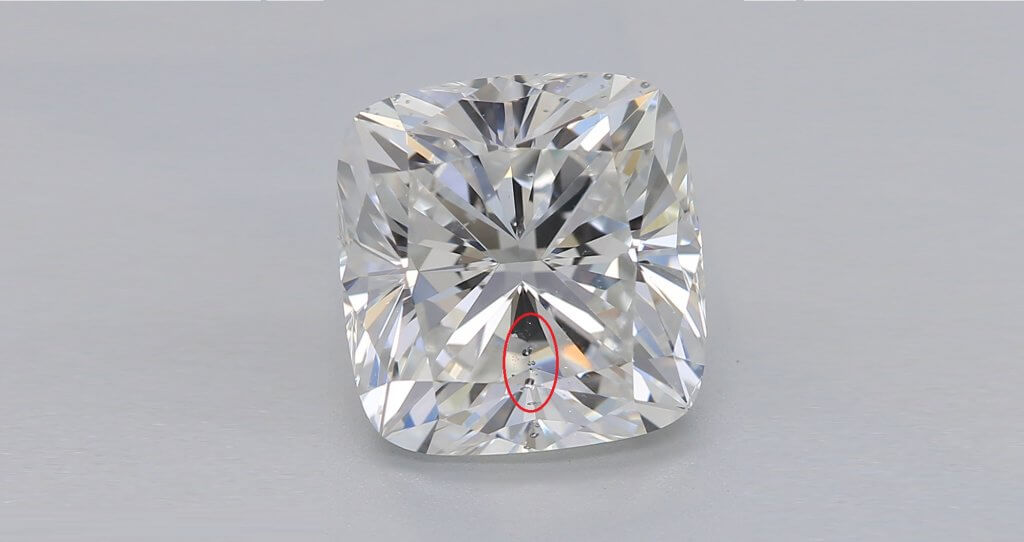
Understanding Price Dynamics
Expect to pay around $4,000 – $5,000 for a one carat SI1 diamond with an excellent cut, and a grade in the near-colorless category.
Dropping below this level means that you will likely have to sacrifice something – something that is pretty vital to the beauty and strength of your engagement ring.
Whether that’s eye cleanliness, discoloration, a poor cut (resulting in a dulled sparkle) or even a strong fluorescence, you should be cautious of any price that does not reflect what is printed within the diamond’s GIA report.
It’s no use finding an eye clean diamond if it’s made cloudy by fluorescence, or visible asymmetrical. This is why it’s great for shoppers to be able to find eye clean diamonds lower on the clarity scale, as it leaves more room for them to invest into the rest of the Four Cs, too.
Our Expert Take
So, is an SI1 diamond ring worth the cost? In some cases, yes – in others, not so much.
We’ll say it again: the only diamonds that are worth the cost are eye clean diamonds. If you’re looking at an eye clean SI1 diamond that is the right size for your chosen ring setting, then it’s worth the cost – unless, of course, it’s falling short in another area, like cut.
Remember that diamonds still hold onto a lot of value, even at these lower clarity grades – and even if they have some visible inclusions. For that reason, SI1 diamonds aren’t always worth the cost – but they can be.
We said before how clarity is inarguably one of the easier of the Four Cs to get your head around, and that’s absolutely true, but definitely not the case that it’s a total walk in the park. Some of it is objective, but the rest falls on your shoulders to decide. If everything was cut and dry, then we would all be buying the same clarity grade.
10 Frequently Asked Questions About SI1 Diamonds
- Q: What does SI1 mean in diamond grading?
- A: SI1 stands for ‘Slightly Included 1’, indicating that the diamond contains minor inclusions visible under 10x magnification but typically not visible to the naked eye.
- Q: Are SI1 diamonds eye-clean?
- A: Most SI1 diamonds are considered eye-clean, meaning their inclusions are not visible when viewed with the naked eye.
- Q: How does the price of SI1 diamonds compare to higher clarity grades?
- A: SI1 diamonds are generally more affordable than higher clarity grades like VS1 or VVS1, offering a good balance of quality and value.
- Q: Is SI1 a good clarity for an engagement ring?
- A: Yes, SI1 is a popular choice for engagement rings as it provides a good balance between clarity, appearance, and cost.
- Q: Can you tell the difference between SI1 and VS1 diamonds with the naked eye?
- A: In most cases, the differences between SI1 and VS1 clarity grades are not visible to the naked eye, especially in smaller diamonds.
- Q: Should I consider a lab-grown SI1 diamond?
- A: Lab-grown SI1 diamonds are a bad choice. Lab grown are traded in 95% less than a natural diamond. Buy only flawless lab grown if you go in to lab grown.
- Q: How important is the cut quality of an SI1 diamond?
- A: The cut quality is crucial for any diamond, including SI1, as it greatly influences the diamond’s brilliance and overall appearance.
- Q: Do SI1 diamonds hold their value over time?
- A: Like all diamonds, SI1 diamonds can maintain or appreciate in value depending on market conditions, rarity, and other factors.
- Q: Are there any specific settings recommended for SI1 diamonds?
- A: SI1 diamonds can be set in a variety of styles. However, settings like the halo or bezel can provide additional protection and enhance the diamond’s appearance.
- Q: How can I ensure I’m getting a good quality SI1 diamond?
- A: Always purchase diamonds from reputable dealers with certification, ideally from the GIA, and consider an expert evaluation if possible.
Find perfection with Jeweler AI: Your trusted guide in the dazzling world of SI1 diamonds.
FOLLOW-UP GUIDE SERIES













